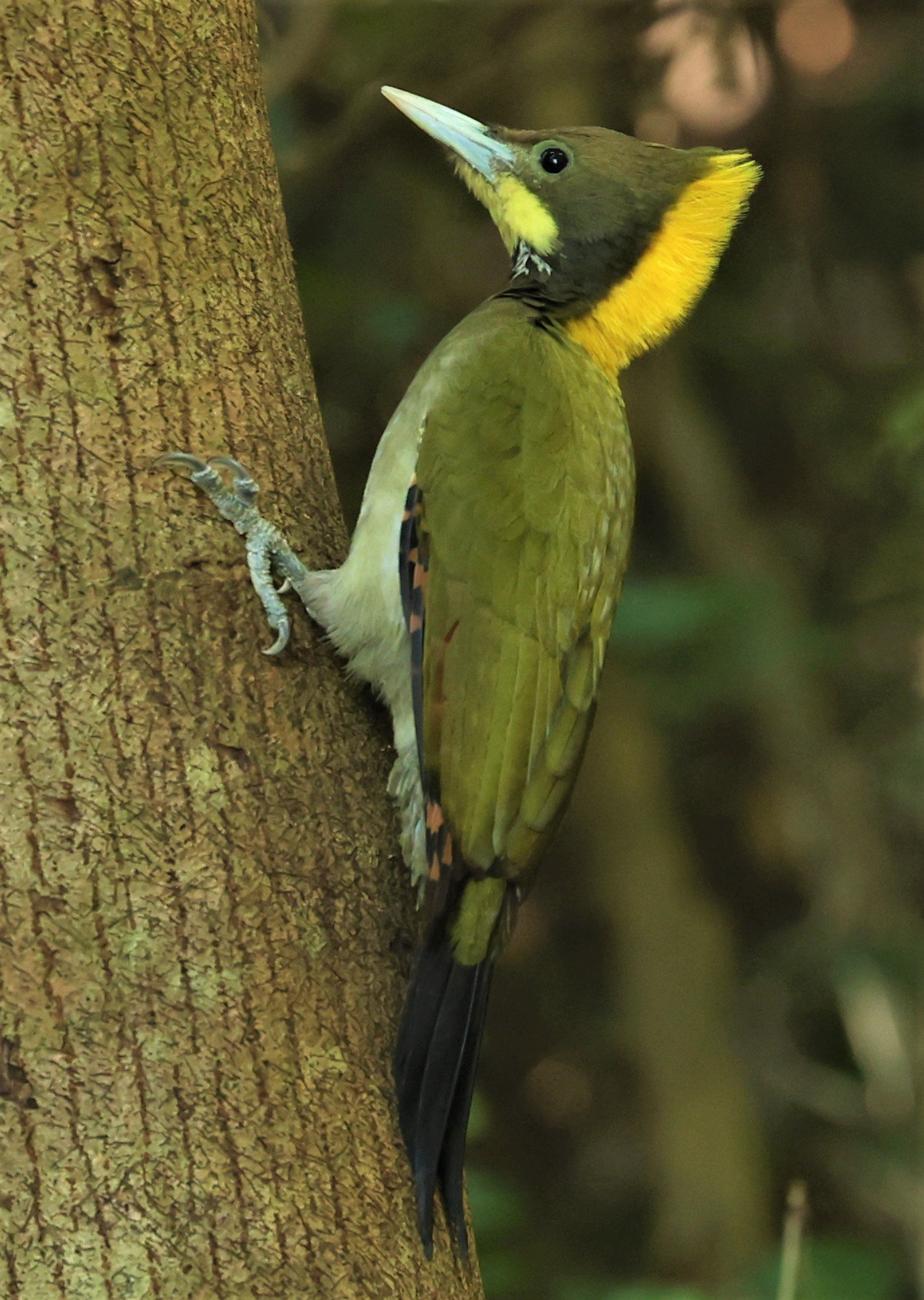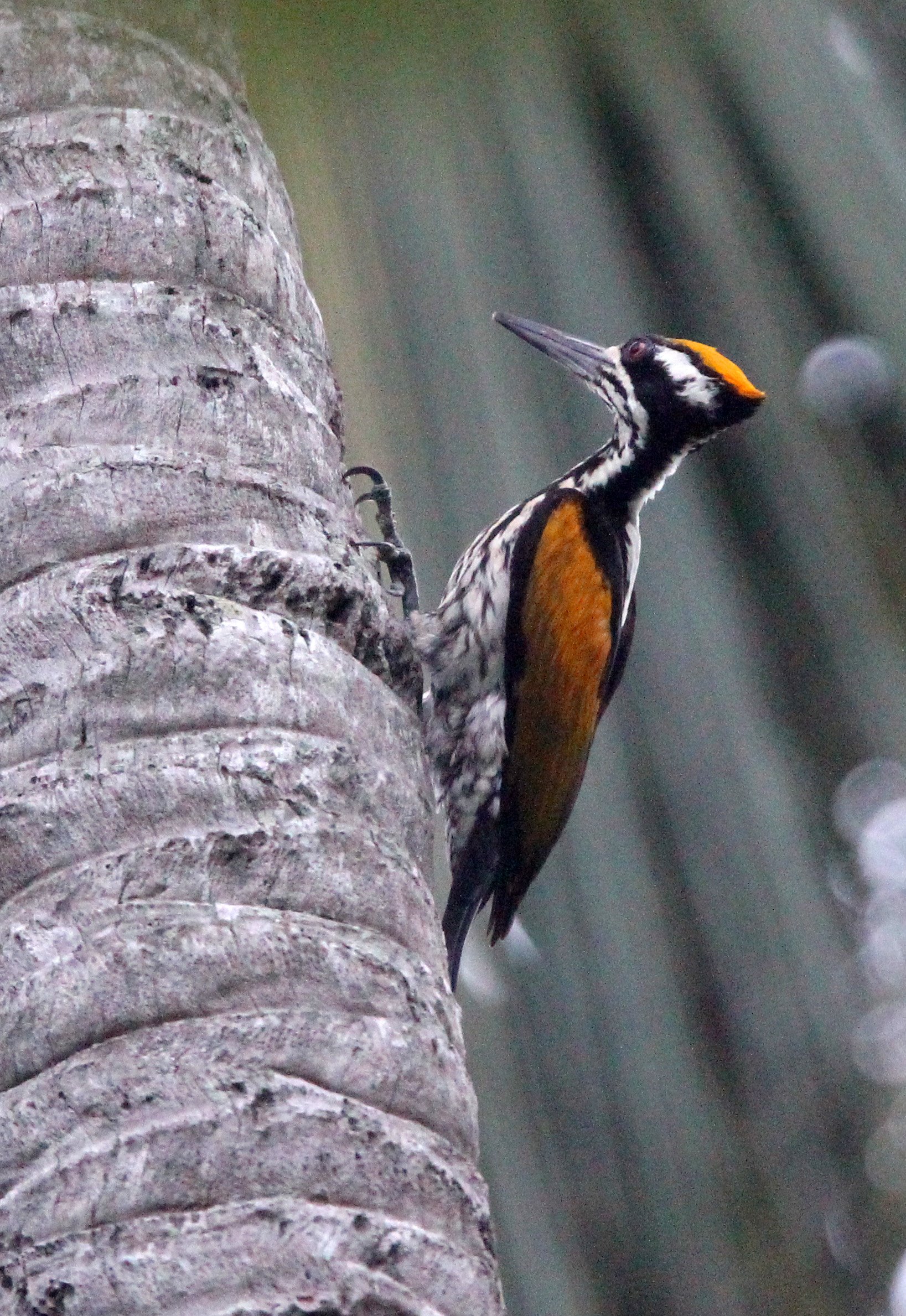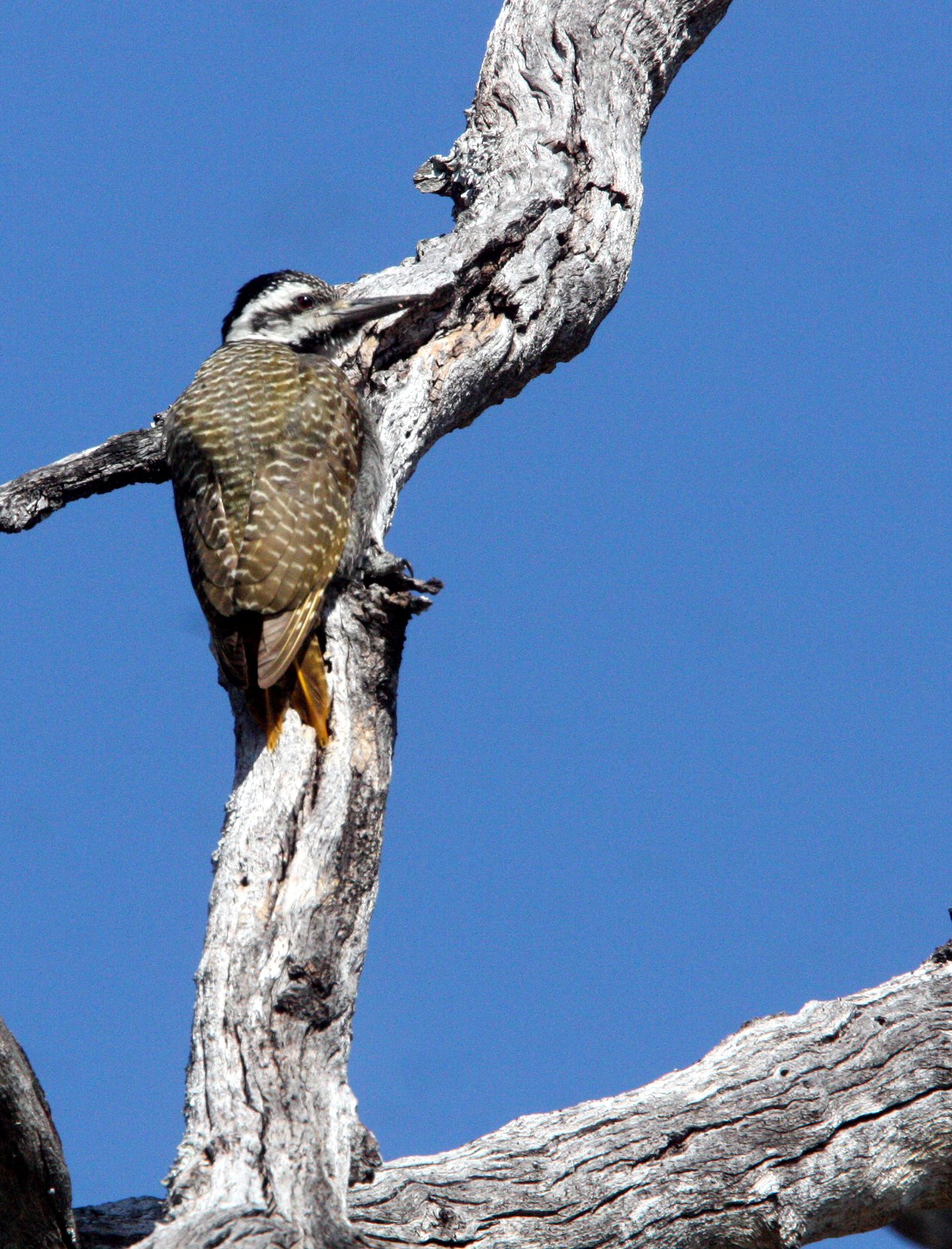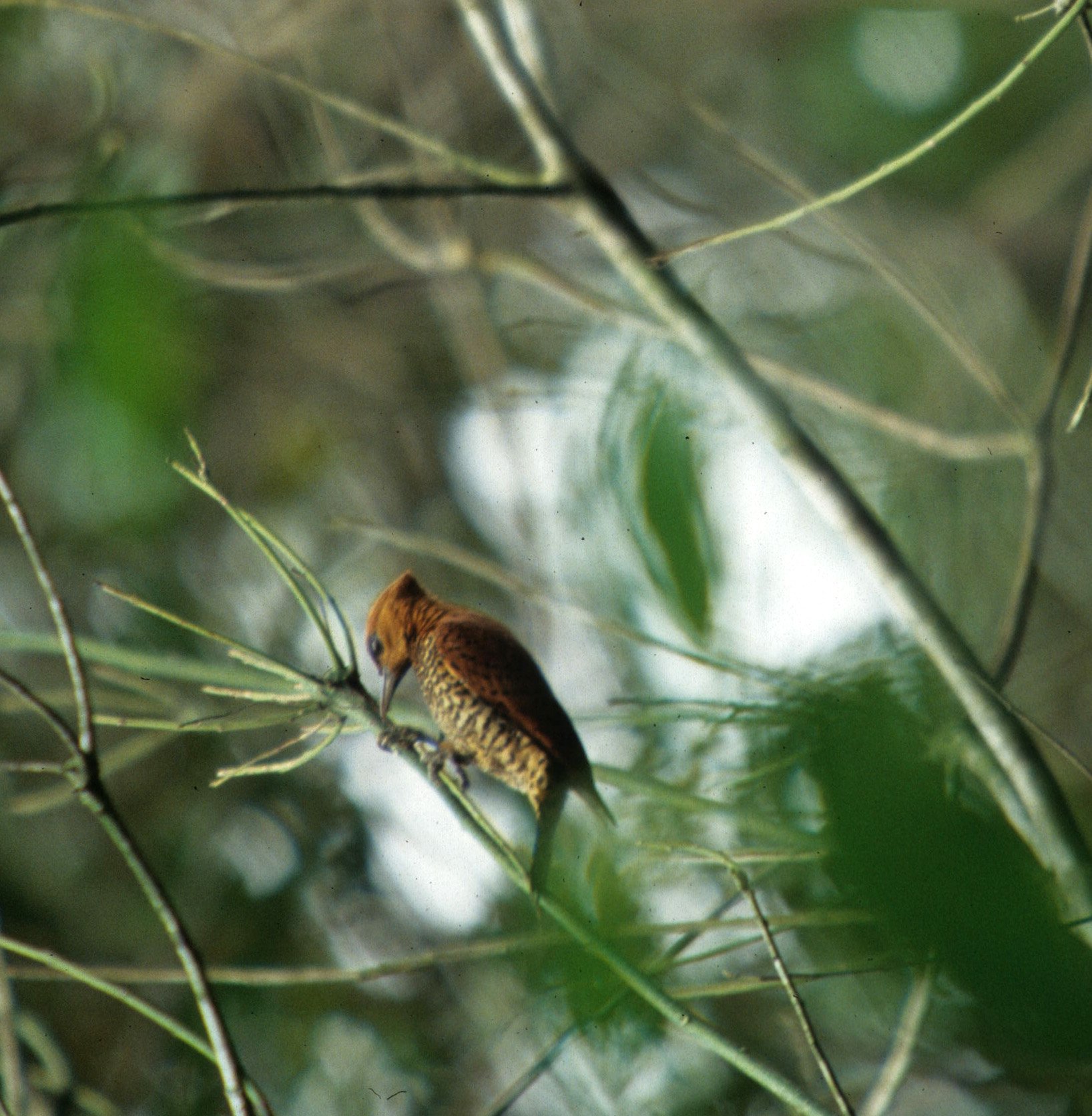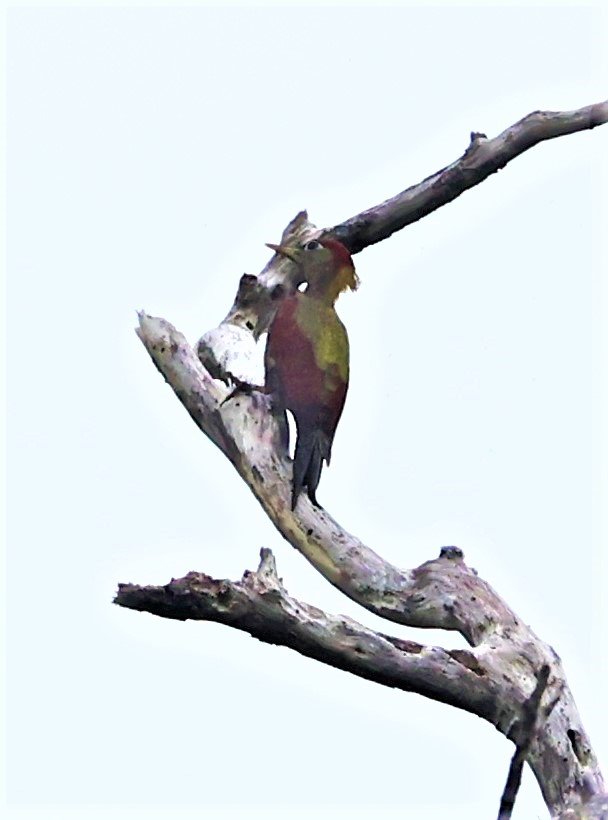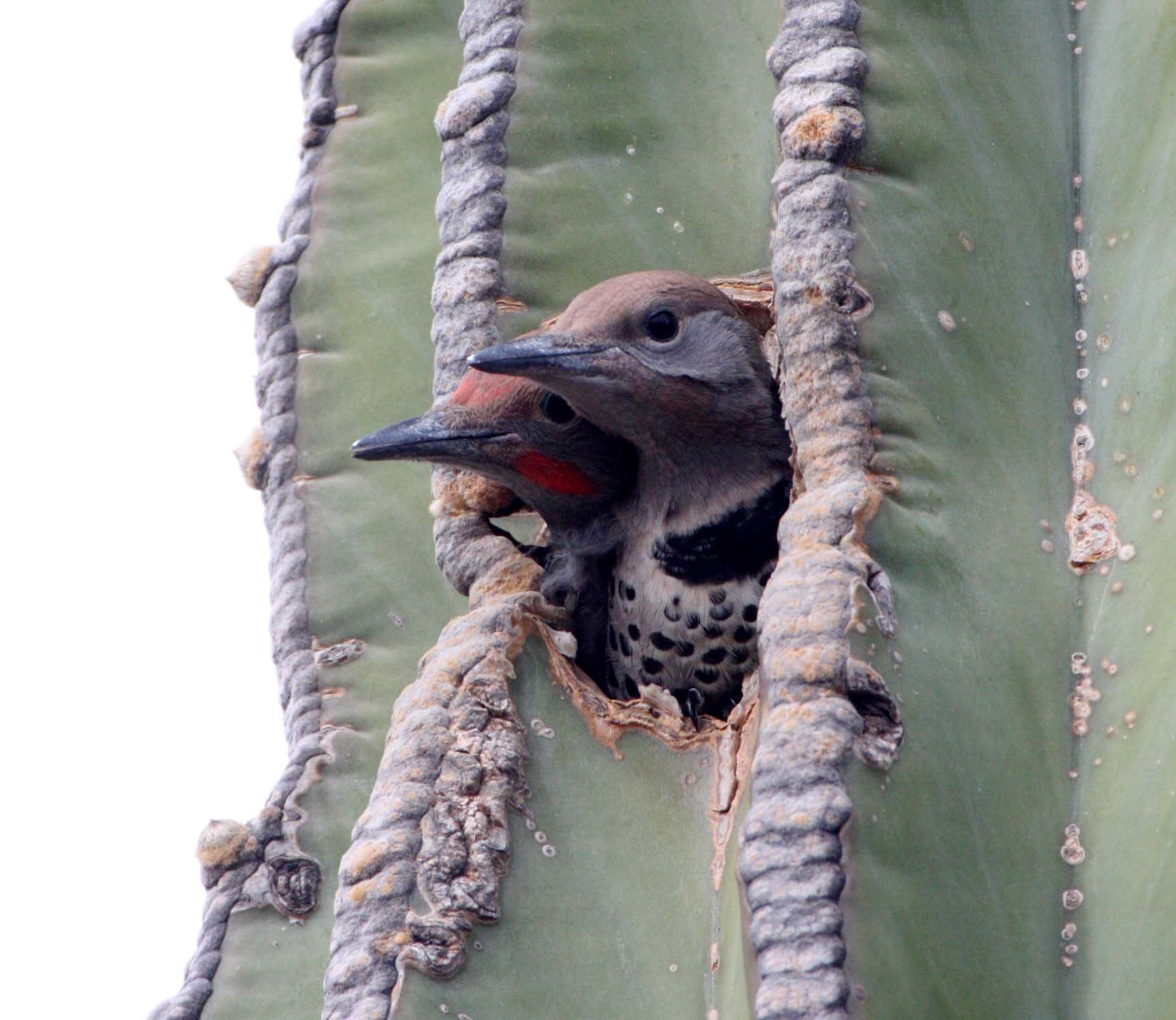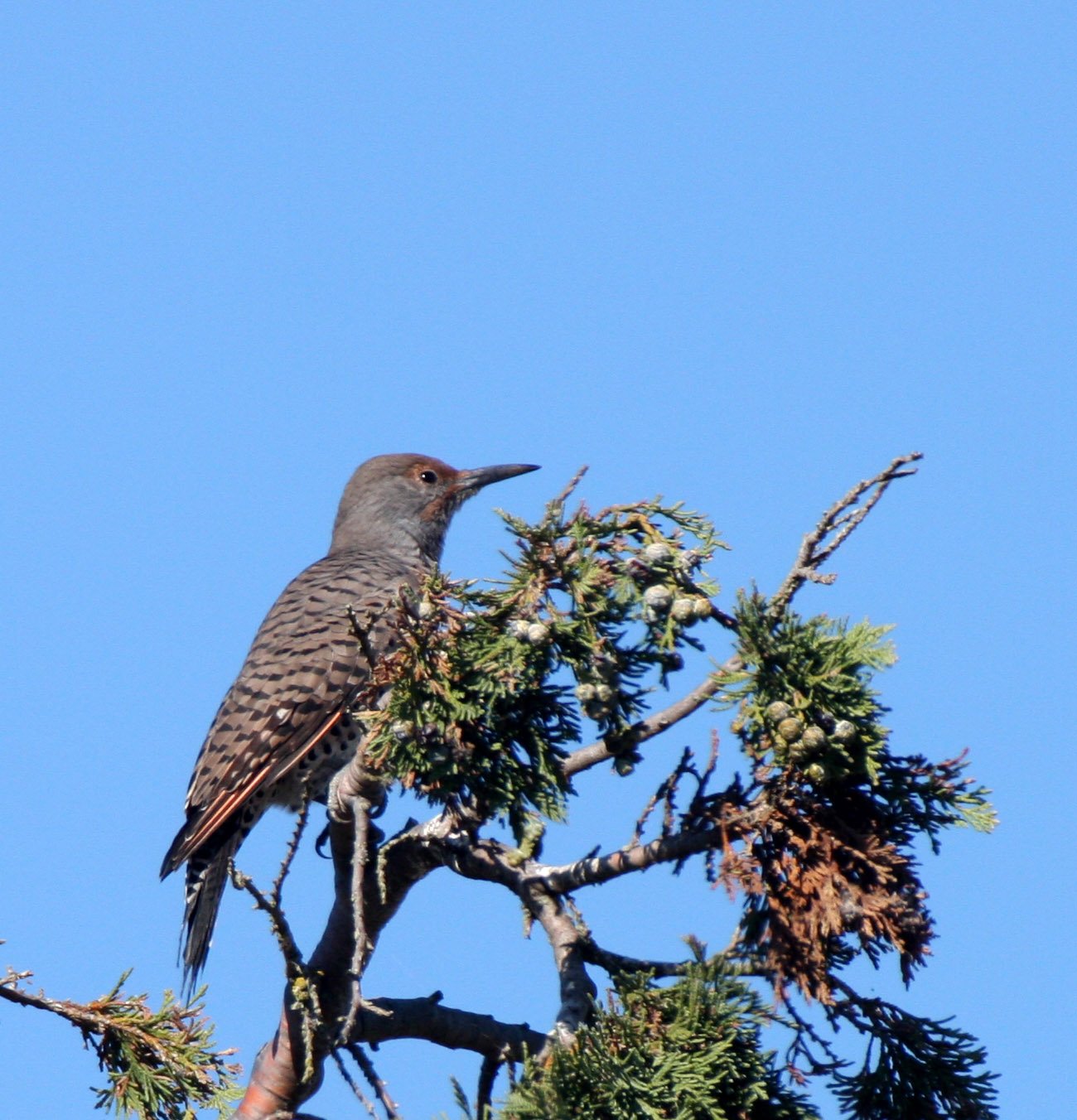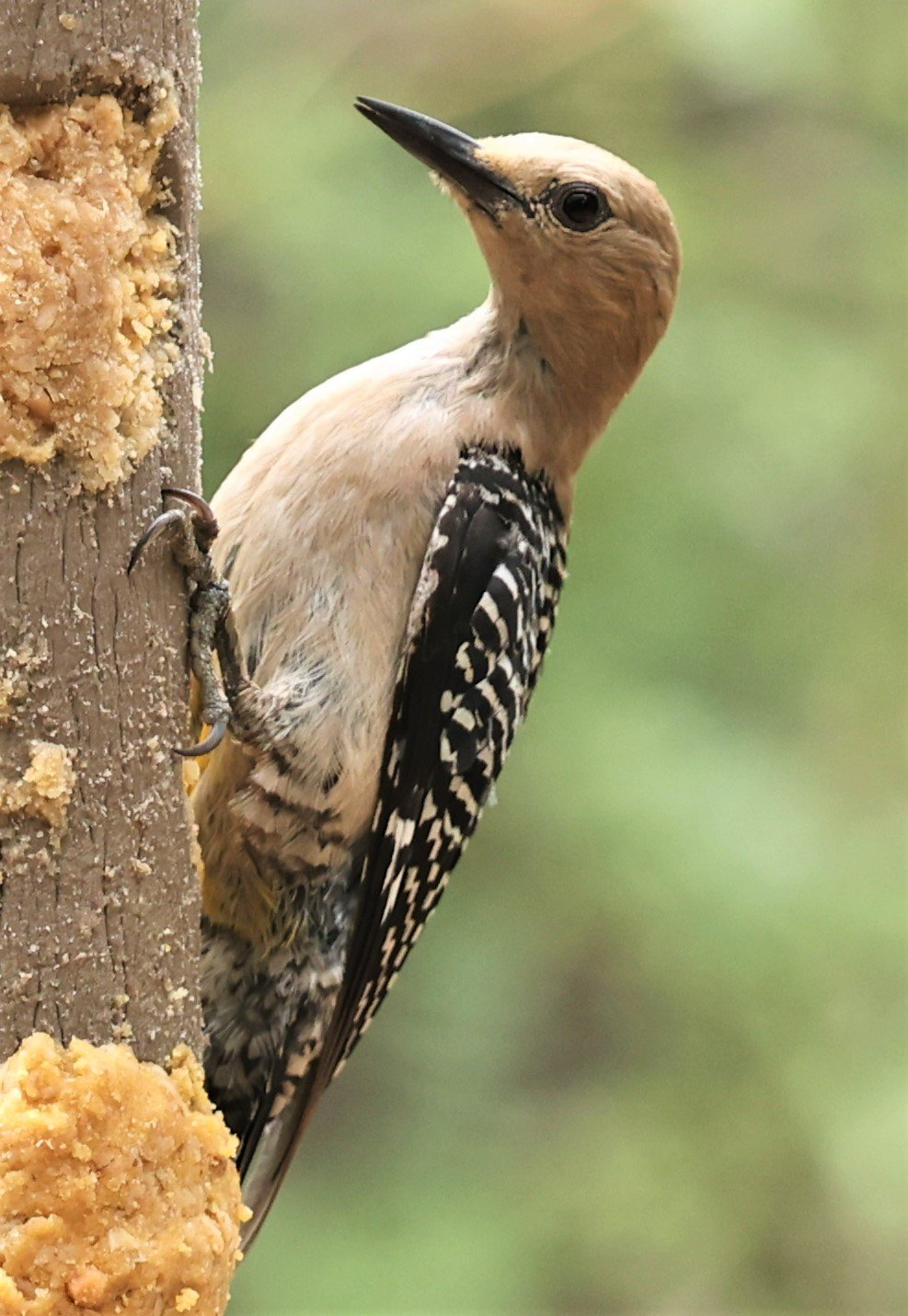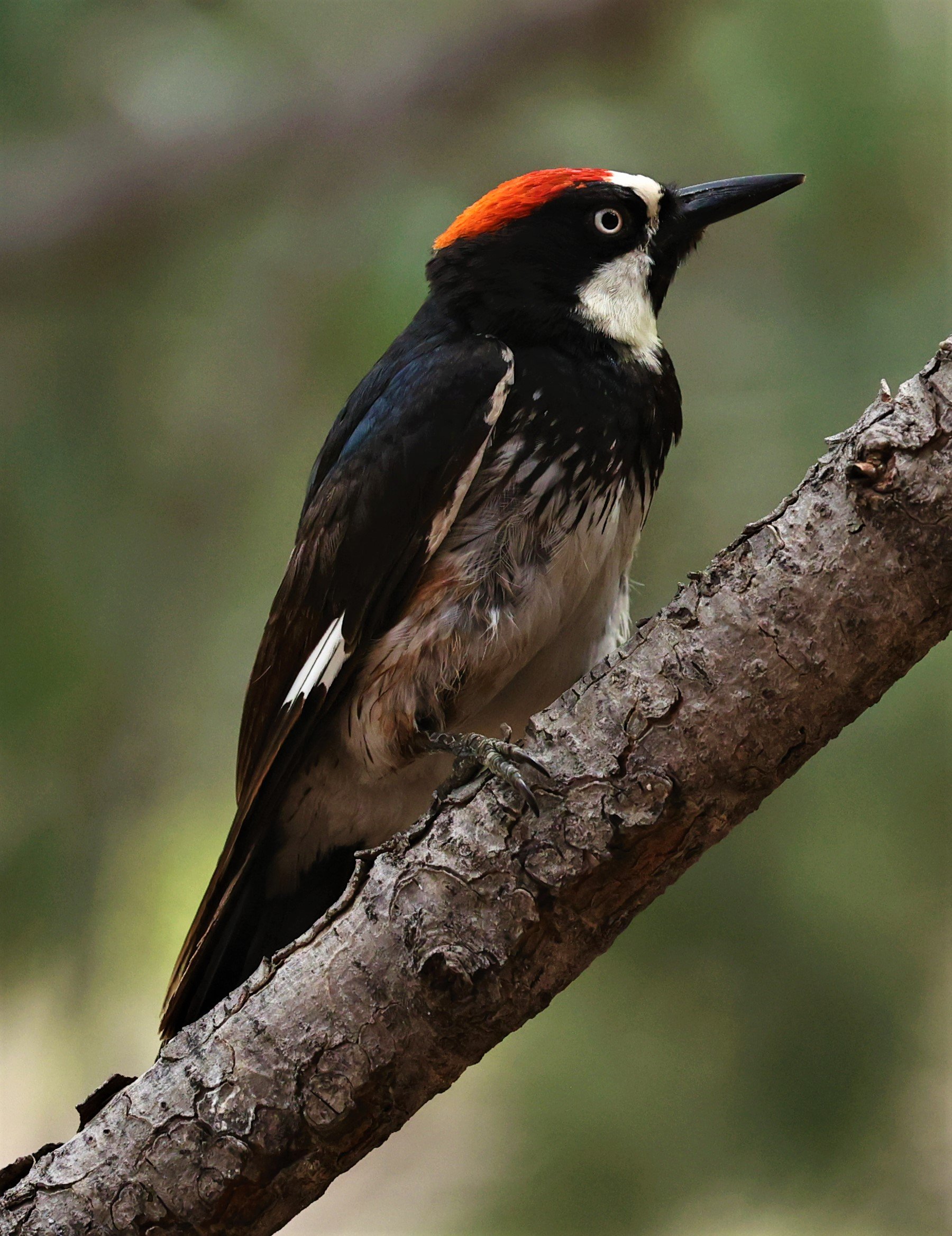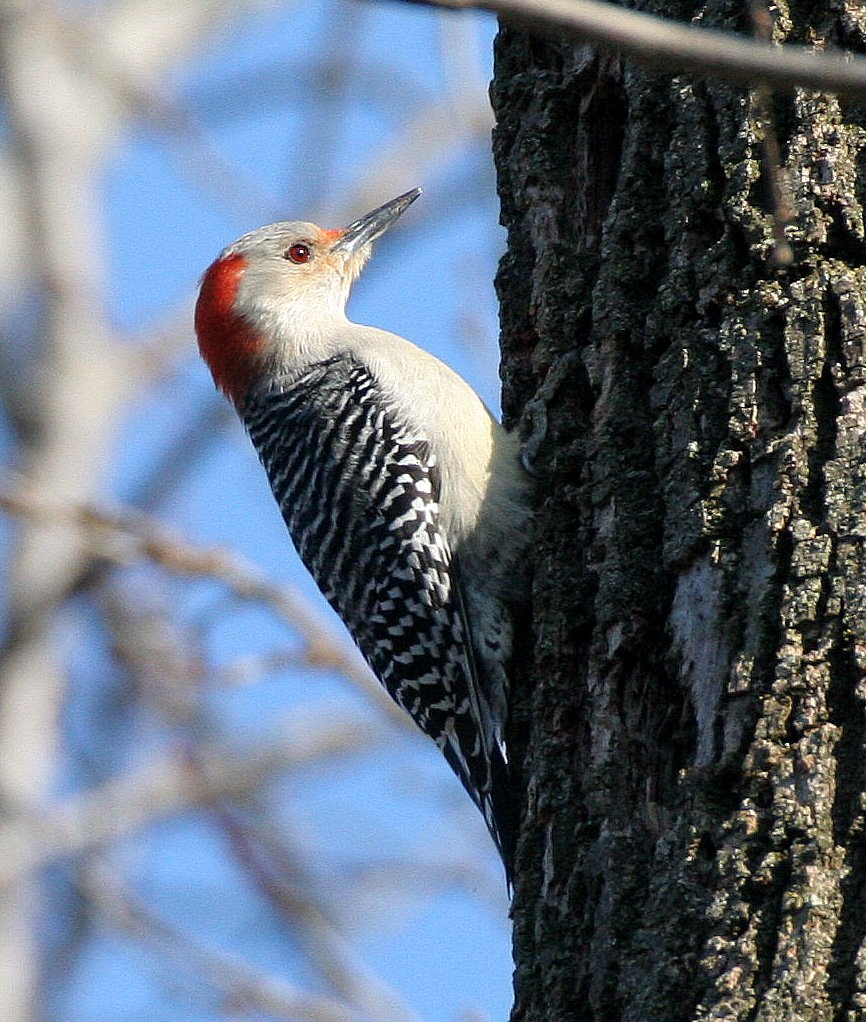
Greater Yellownape in Kaeng Krachan National Park, Thailand
Family Picidae, Woodpeckers
Woodpeckers are part of the bird family Picidae, which also includes the piculets, wrynecks and sapsuckers. Members of this family are found worldwide, except for Australia, New Guinea, New Zealand, Madagascar and the extreme polar regions. Most species live in forests or woodland habitats, although a few species are known that live in treeless areas, such as rocky hillsides and deserts, and the Gila woodpecker specialises in exploiting cacti.
Members of this family are chiefly known for their characteristic behaviour. They mostly forage for insect prey on the trunks and branches of trees, and often communicate by drumming with their beaks, producing a reverberatory sound that can be heard at some distance. Some species vary their diet with fruits, birds' eggs, small animals, tree sap, human scraps, and carrion. They usually nest and roost in holes that they excavate in tree trunks, and their abandoned holes are of importance to other cavity-nesting birds. They sometimes come into conflict with humans when they make holes in buildings or feed on fruit crops, but perform a useful service by their removal of insect pests on trees.
The Picidae are one of nine living families in the order Piciformes, the others being barbets (comprising three families), toucans, toucan-barbets, and honeyguides, which (along with woodpeckers) comprise the clade Pici, and the jacamars and puffbirds in the clade Galbuli. DNA sequencing has confirmed the sister relationships of these two groups. The family Picidae includes about 240 species arranged in 35 genera. Almost 20 species are threatened with extinction due to loss of habitat or habitat fragmentation, with one, the Bermuda flicker, being extinct and a further two possibly being so.
The plumage of woodpeckers varies from drab to conspicuous. The colours of many species are based on olive and brown and some are pied, suggesting a need for camouflage; others are boldly patterned in black, white, and red, and many have a crest or tufted feathers on their crowns. Woodpeckers tend to be sexually dimorphic, but differences between the sexes are generally small; exceptions to this are Williamson's sapsucker and the orange-backed woodpecker, which differ markedly. The plumage is moulted fully once a year apart from the wrynecks, which have an additional partial moult before breeding.
Grey-headed Woodpeckers in Thailand
Woodpeckers, piculets, and wrynecks all possess characteristic zygodactyl feet, consisting of four toes, the first (hallux) and the fourth facing backward and the second and third facing forward. This foot arrangement is good for grasping the limbs and trunks of trees. Members of this family can walk vertically up tree trunks, which is beneficial for activities such as foraging for food or nest excavation. In addition to their strong claws and feet, woodpeckers have short, strong legs. This is typical of birds that regularly forage on trunks. Exceptions are the black-backed woodpecker and the American and Eurasian three-toed woodpeckers, which have only three toes on each foot. The tails of all woodpeckers, except the piculets and wrynecks, are stiffened, and when the bird perches on a vertical surface, the tail and feet work together to support it.
Woodpeckers have strong bills that they use for drilling and drumming on trees, and long, sticky tongues for extracting food (insects and larvae).[4] Woodpecker bills are typically longer, sharper, and stronger than the bills of piculets and wrynecks, but their morphology is very similar. The bill's chisel-like tip is kept sharp by the pecking action in birds that regularly use it on wood. The beak consists of three layers; an outer sheath called rhamphotheca, made of scales formed from keratin proteins, an inner layer of bone which has a large cavity and mineralised collagen fibers, and a middle layer made of porous bone which connects the two other layers.
Furthermore, the tongue bone (or hyoid bone) of the woodpecker is very long, and winds around the skull through a special cavity, thereby cushioning the brain.[9] Combined, this anatomy helps the beak absorb mechanical stress. Species of woodpecker and flicker that use their bills in soil or for probing as opposed to regular hammering tend to have longer and more decurved bills. Due to their smaller bill size, many piculets and wrynecks forage in decaying wood more often than woodpeckers. Their long, sticky tongues, which possess bristles, aid these birds in grabbing and extracting insects from deep within a hole in a tree. The tongue was reported to be used to spear grubs, but more detailed studies published in 2004 have shown that the tongue instead wraps around the prey before being pulled out.
Red-breasted Sapsucker is a common forest bird in North America
Many of the foraging, breeding, and signaling behaviors of woodpeckers involve drumming and hammering using their bills. To prevent brain damage from the rapid and repeated powerful impacts, woodpeckers have a number of physical features that protect their brains. These include a relatively small and smooth brain, narrow subdural space, little cerebrospinal fluid surrounding it to prevent it from moving back and forth inside the skull during pecking, the orientation of the brain within the skull (which maximises the contact area between the brain and the skull) and the short duration of contact. The skull consists of strong but compressible, sponge-like bone, which is most concentrated in the forehead and the back of the skull. Another anatomical adaptation of woodpeckers is the enormously elongated hyoid bone which subdivides, passes on either side of the spinal column and wraps around the brain case, before ending in the right nostril cavity. It plays the role of safety-belt.
Computer simulations have shown that 99.7% of the energy generated in pecking is stored in the form of strain energy, which is distributed throughout the bird's body, with only a small remaining fraction of the energy going into the brain. The pecking also causes the woodpecker's skull to heat up, which is part of the reason why they often peck in short bursts with brief breaks in between, giving the head some time to cool. During the millisecond before contact with wood, a thickened nictitating membrane closes, protecting the eye from flying debris. These membranes also prevent the retina from tearing. Their nostrils are also protected; they are often slit-like and have special feathers to cover them. Woodpeckers are capable of repeated pecking on a tree at high decelerations on the order of 10,000 m/s2 (33,000 ft/s2) (1000 g).
Some large woodpeckers such as Dryocopus have a fast, direct form of flight, but the majority of species have a typical undulating flight pattern consisting of a series of rapid flaps followed by a swooping glide. Many birds in the genus Melanerpes have distinctive, rowing wing-strokes while the piculets engage in short bursts of rapid direct flight.
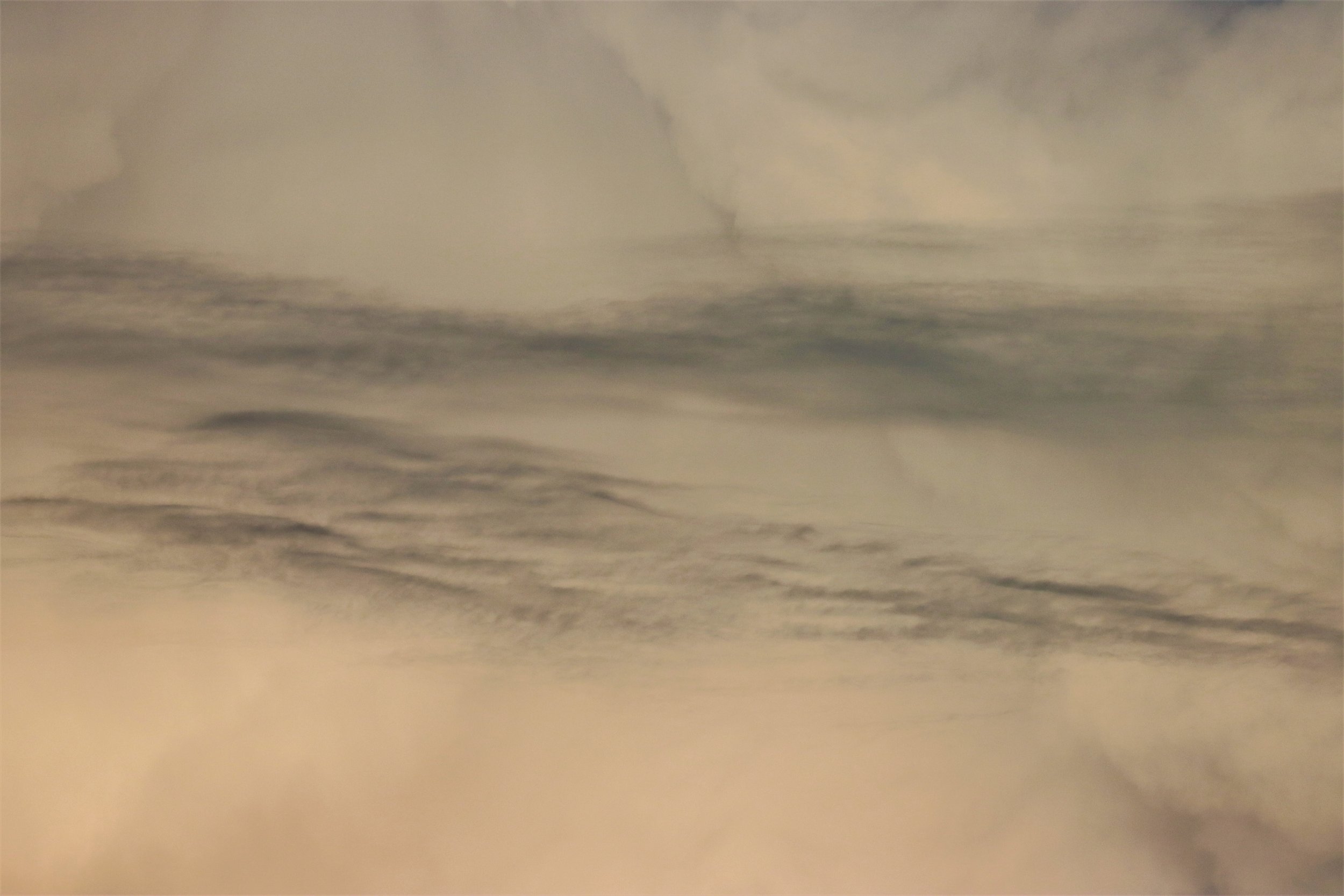
Common Flameback (Dinopium javanense) Thailand
White-naped Woodpecker (Chrysocolaptes festivus) Sri Lanka
Greater flameback (Chrysocolaptes guttacristatus) Thailand

Ashy woodpecker (Mulleripicus fulvus) Sulawesi
Great Slaty Woodpecker (Mulleripicus pulverulentus) Thailand
Greater Yellownape (Chrysophlegma flavinucha) Thailand

Bearded Woodpecker (Chloropicus namaquus) South Africa
Cinnamon woodpecker (Celeus loricatus) Panama

Black-headed Woodpecker (Picus erythropygius)
Grey-headed Woodpecker (Picus canus) Thailand
Lesser Yellownape (Picus chlorolophus) Thailand, India

Levaillant's Woodpecker (Picus vaillantii) Tunisia
Crimson-winged Woodpecker (Picus puniceus) Malaysia
Black-naped Woodpecker (Picus guerini) Thailand

Streak-breasted Woodpecker (Picus viridanus) Thailand
Checker-throated Woodpecker - (Chrysophlegma mentale) Thailand

Buff-necked Woodpecker (Meiglyptes tukki) Thailand
Buff-rumped Woodpecker (Meiglyptes grammithorax) Thailand
Heart-spotted Woodpecker (Hemicircus canente) Thailand

Cardinal Woodpecker (Dendropicos fuscescens) South Africa
Golden-tailed Woodpecker (Campethera abingoni) South Africa

Nuttall's woodpecker (Dryobates nuttallii) California
Ladder-backed Woodpecker (Dryobates scalaris) North America
Downy Woodpecker (Dryobates pubescens) USA

White-bellied Woodpecker (Dryocopus javensis) Thailand
Bamboo Woodpecker (Gecinulus viridis) Thailand

White-headed woodpecker (Leuconotopicus albolarvatus) California
Hairy Woodpecker (Leuconotopicus villosus) Washington
Arizona Woodpecker (Leuconotopicus arizonae) Arizona

Stripe-breasted Woodpecker (Dendrocopos atratus) Thailand
Freckle-breasted Woodpecker (Dendrocopos analis) Thailand
Great Spotted Woodpecker (Dendrocopos major) Europe, Japan, China

Gilded Flicker (Colaptes chrysoides) Baja
Northern Flicker (Colaptes auratus) USA

Gila Woodpecker (Melanerpes uropygialis) Arizona
Acorn Woodpecker (Melanerpes formicivorus)
Red-bellied Woodpecker (Melanerpes carolinus) Illinois

Japanese Pygmy Woodpecker (Yungipicus kizuki) Japan
Pileated woodpecker (Dryocopus pileatus) California, Washington
White-backed Woodpecker (Dendrocopos leucotos) China

Red-breasted Sapsucker (Sphyrapicus ruber) Washington
Orange-backed Woodpecker (Reinwardtipicus validus) Thailand
Rufous Woodpecker (Micropternus brachyurus) Thailand, Borneo

Speckled Piculet (Picumnus innominatus) Thailand
Eurasian Wryneck (Jynx torquilla) Tunsisia
Andean Flicker (Colaptes rupicola) Lauca National Park, Chile
Blonde-crested Woodpecker (Celeus flavescens) Espirito Santo, Santa Teresa, Pousada Vita Verde
Campo Flicker (Colaptes campestris) Fazenda Garibaldi, Sao Paulo State
Crimson-crested Woodpecker (Campephilus melanoleucos) Ariau River & Rio Negro Region Southwest of Manaus
Woodpecker - Golden-collared Woodpecker (Dryobates cassini) Museu da Amazonia Tower Park (MUSA), Manaus
Green-barred Woodpecker (Colaptes melanochloros) Pousada Aguape Brazil

Lineated Woodpecker (Dryocopus lineatus) Nazare Paulista, Sao Paulo State, Brazil (Only one image sadly)
Powerful Woodpecker (Campephilus pollens) San Isidro Lodge, Ecuador
Ochre-collared Piculet (Picumnus temminckii) Fazenda Garibaldi, Sao Paulo State
White-barred Piculet (Picumnus cirratus) Nazare Paulista, Sao Paulo State, Brazil (only one picture)
Red-stained Woodpecker (Dryobates affinis) Illeus, Bahia Brazil, Una Township Area
Ringed Woodpecker (Celeus torquatus) Illeus, Bahia Brazil, Una Township Area
White Woodpecker (Melanerpes candidus) Pousada Aguape
White-fronted Woodpecker (Melanerpes cactorum) Pousada Aguape
Yellow-fronted Woodpecker (Melanerpes flavifrons) Carlos Botelho State Park, Sao Paulo State Brazil
Banded Woodpecker (Chrysophlegma miniaceum) Bukit Lawang Gunung Leuser NP Sumatra Indonesia
